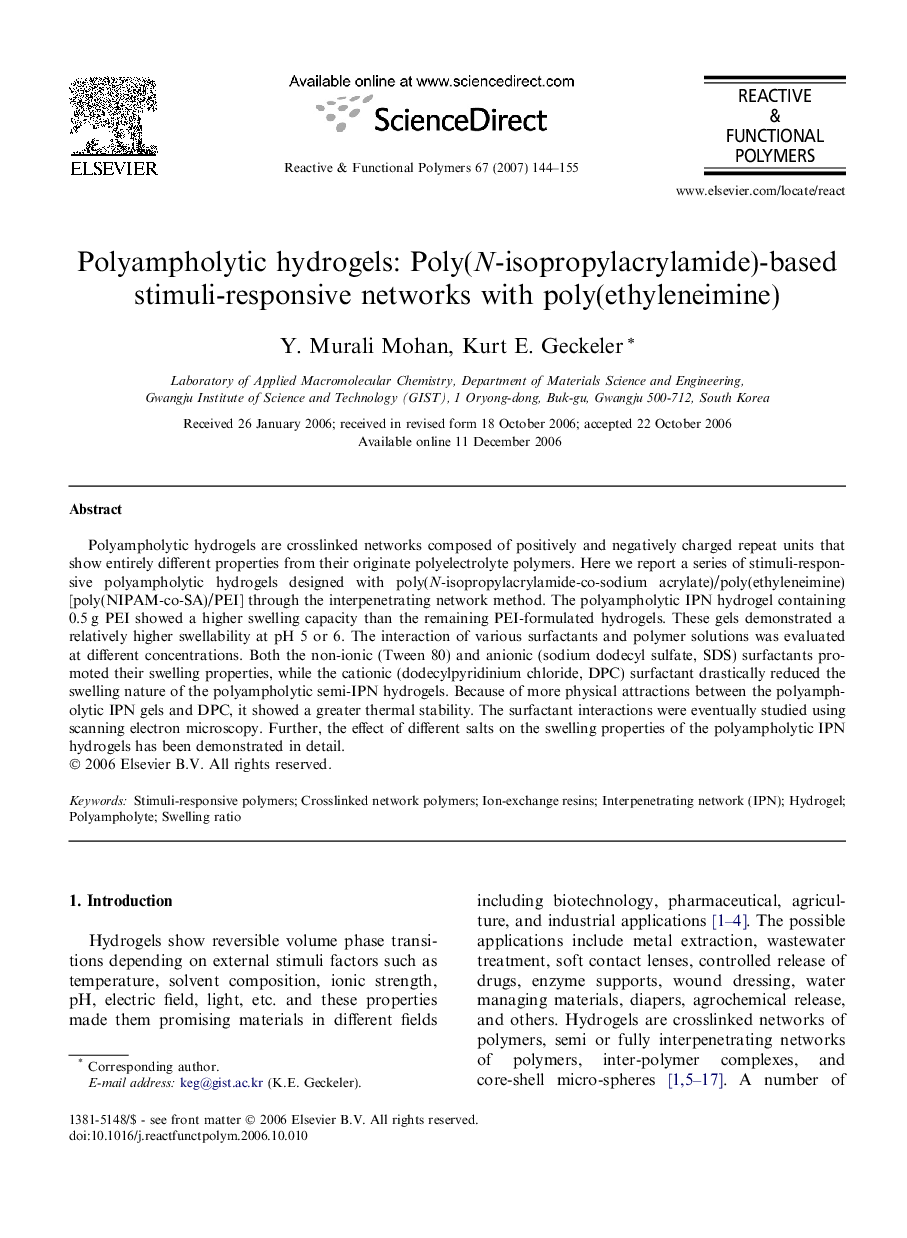| Article ID | Journal | Published Year | Pages | File Type |
|---|---|---|---|---|
| 5211562 | Reactive and Functional Polymers | 2007 | 12 Pages |
Abstract
Polyampholytic hydrogels are crosslinked networks composed of positively and negatively charged repeat units that show entirely different properties from their originate polyelectrolyte polymers. Here we report a series of stimuli-responsive polyampholytic hydrogels designed with poly(N-isopropylacrylamide-co-sodium acrylate)/poly(ethyleneimine) [poly(NIPAM-co-SA)/PEI] through the interpenetrating network method. The polyampholytic IPN hydrogel containing 0.5Â g PEI showed a higher swelling capacity than the remaining PEI-formulated hydrogels. These gels demonstrated a relatively higher swellability at pH 5 or 6. The interaction of various surfactants and polymer solutions was evaluated at different concentrations. Both the non-ionic (Tween 80) and anionic (sodium dodecyl sulfate, SDS) surfactants promoted their swelling properties, while the cationic (dodecylpyridinium chloride, DPC) surfactant drastically reduced the swelling nature of the polyampholytic semi-IPN hydrogels. Because of more physical attractions between the polyampholytic IPN gels and DPC, it showed a greater thermal stability. The surfactant interactions were eventually studied using scanning electron microscopy. Further, the effect of different salts on the swelling properties of the polyampholytic IPN hydrogels has been demonstrated in detail.
Keywords
Related Topics
Physical Sciences and Engineering
Chemistry
Organic Chemistry
Authors
Y. Murali Mohan, Kurt E. Geckeler,
